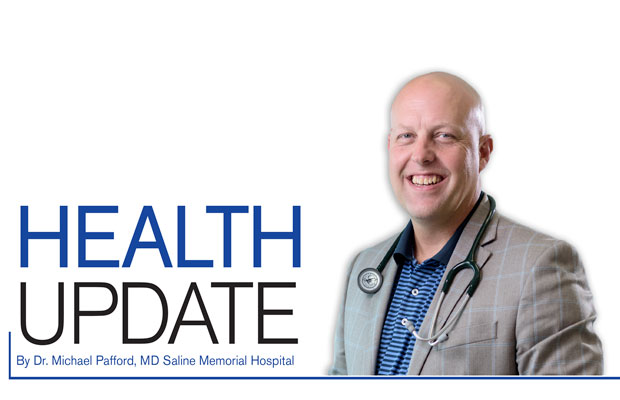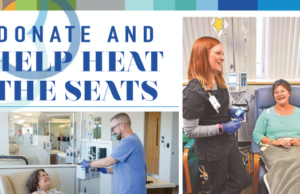National Stroke Awareness

On the 11th of May, 1989, I was a junior attending Hot Springs High School. The Reagan era had just ended and in the prior November George Bush had just been elected the 41st President of the United States. I’m not certain I even knew what a stroke was back then. I certainly didn’t know that stroke was costing the United States $11 billion per year! Nor could I have known that I would have a stroke on the 23rd of March 2016.
But on that 11th day of May, a Joint Resolution of the Senate, #62, had declared the month of May as National Stroke Awareness Month and asked for an Official Proclamation from the President. President Bush signed Proclamation 5975 so that every May, we as a Nation would be called upon to “observe the month with appropriate ceremonies and activities,” all with the aim of not letting ourselves forget how significantly stroke contributes to our national illness.
It’s difficult to account for the cumulative cost of stroke. If we do nothing more than adjust for inflation, $11 billion in 1989 equates to $22.5 billion today. But that is inadequate because it doesn’t account for how much bigger the US population is today. Neither does it account for extra cost from new procedures and medicines that were not available in 1989.
When we account for all factors, the estimated health cost to the US from stroke today is $34 billion. It’s the 5th leading cause of death in the US and a major leading cause of disability. Of every 20 deaths in America, 1 is stroke related on average and this year we can expect 140,000 Americans to die of stroke.
Of course it’s hard to forget the cumulative cost of stroke when we remember some of the people whom stroke robbed from us. As I write this, stroke robbed us of John Singleton yesterday (29th of April, 2019) at the young age of 51. He was 22 when he directed the 1991 movie, Boyz n the Hood, just two years after President Bush made National Stroke Awareness month official.
In March of this year we were all shocked by Luke Perry’s early death from stroke at age 52. Unfortunately, stroke doesn’t seem to care whom it takes. From screen actors and directors to musicians, politicians, authors, dancers, scientists and even mob bosses, no one is immune from stroke. Consider for a moment the cumulative talent taken from the world by stroke: Bill Paxton, Cary Grant, Johann Sebastian Bach, Charles Dickens, Gene Kelly, Winston Churchill, Woodrow Wilson, Mae West, Patrice O’neal, Louis Pasteur, Nicolaus Copernicus, Miles Davis, Isaac Hayes, Alfred Nobel.
These are just a few, but certainly they remind us of the immeasurable cost of stroke. We can’t even put in terms of dollars what the world lost in another Miles Davis album, another Bach concerto, another Charles Dickens novel.
So what do we do about it? What can we do to decrease the burden stroke places on our lives, our families, and our country? Well, I know what I’m going to do. I’m going to go fill my Crestor prescription.
My stroke was not cholesterol related. It was a vertebral dissection, which is not mediated by cholesterol plaques in arteries. But I cannot change the fact that the number one risk factor for stroke is having already had one.
I’m more likely to have a stroke than the next guy because I’ve already had one. I cannot change that, but I can change my cholesterol. I get leg cramps more often when I take cholesterol medicine and I don’t like it that I’m stuck taking something. But when I’m honest with myself, I can take Coenzyme Q10 with Crestor and I can stretch my legs before bed–and by doing those things it is tolerable. It is an inconvenience but much less inconvenient than having another stroke.
But what can we do to help others, rather than just help ourselves? We can do our best to help others not smoke. Tobacco use is the second highest risk factor for stroke. Smoking cessation does more to reduce stroke risk than any other modifiable risk factor. Do not let yourself or people you love believe that taking their Crestor affords them the ability to continue smoking. It doesn’t work that way. Continuing to smoke while you take cholesterol medicine is like having a fire hose primed and ready in your hand but choosing to spit on the fire instead!
But more than that, how can we affect stroke on a societal level? How can we arm our community with tools to help stroke victims become stroke survivors? We can BE FAST. BE FAST is an acronym to remind us of the most frequent signs of stroke and to remind us that the critical intervention for someone having a stroke is to get to the ER quickly.
Study the facing page of this article to educate yourself of the signs of stroke, and if you find someone you think is having a stroke, call 911 quickly. Stroke is a brain disease and your brain is your thinking organ. Do not let a stroke victim talk you out of calling 911. If they are having a stroke, their thinking is impaired. It could be too late if you wait.
I think we should celebrate National Stroke Awareness Month in the spirit of Asa Hutchinson. National Stroke Awareness Month is not new, it’s not flashy, but it is important to our state and national health and Governor Hutchinson recognized that. He took time to record a public service announcement encouraging Arkansans to learn the signs of stroke so they could BE FAST.
Please take a few moments to follow this YouTube link to the Governor’s announcement https://youtu.be/pIitIvrsdNs and share it on your social media so that we can all BE FAST and help a stroke victim become a stroke survivor. ν










0 comments